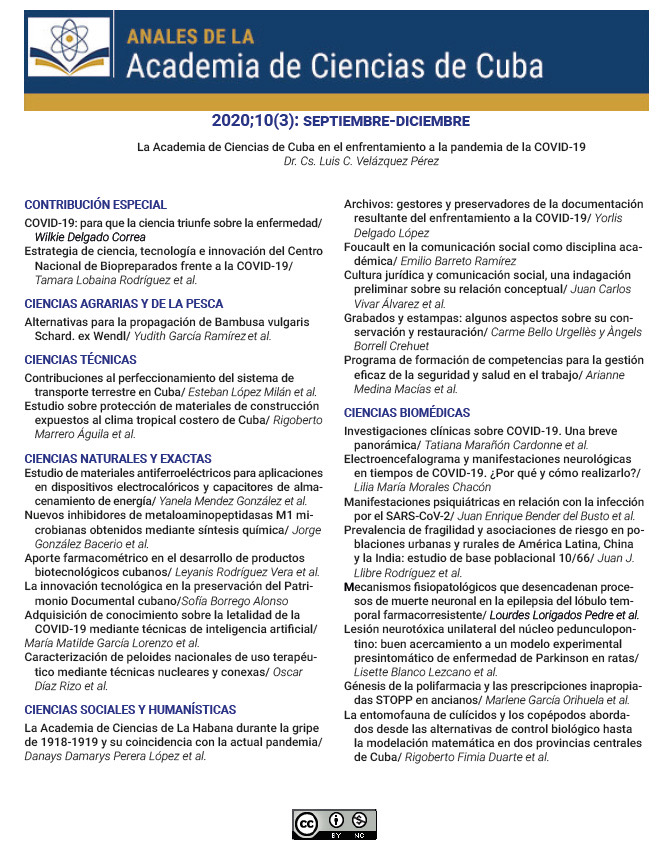Electroencephalogram and neurological manifestations in times of COVID-19. Why and how to do it?
Keywords:
electroencephalogram, seizures, SARS-CoV-2, COVID-19, encephalopathyAbstract
The objective of this study is to review the available evidence on the role of Electroencephalogram (EEG) in the context of the impact of infection by severe acute respiratory syndrome coronavirus 2 (SARS-CoV-2) on the central nervous system. The study was based on an exhaustive review of the publications indexed in the National Library of Medicine of the United States of America (Pubmed/Medline). In addressing the neurological complications of SARS-CoV-2 infection, emphasis is placed on reports of epileptic seizures, non-seizure epileptic states, acute symptomatic seizures, and encephalopathies. The EEG findings reported in the literature are detailed. Recommendations for the EEG recording and interpretation are also presented concerning patients under investigation for coronavirus disease 2019 (COVID -19), in both outpatient and hospitalization statuses, emphasizing the Care Intensive Units. It is concluded that EEG provides relevant information for the evaluation of neurological manifestations in patients under investigation for COVID-19. Carrying out the different types of EEG studies requires the assessment of risk versus benefit, and demands compliance with biosafety protocols.Downloads
Published
How to Cite
Issue
Section
License
The journal Anales de la Academia de Ciencias de Cuba protects copyright, and operates with a Creative Commons License 4.0 (Creative Commons Attribution-NonCommercial License 4.0). By publishing in it, authors allow themselves to copy, reproduce, distribute, publicly communicate their work and generate derivative works, as long as the original author is cited and acknowledged. They do not allow, however, the use of the original work for commercial or lucrative purposes.
The authors authorize the publication of their writings, retaining the authorship rights, and assigning and transferring to the magazine all the rights protected by the intellectual property laws that govern in Cuba, which imply editing to disseminate the work.
Authors may establish additional agreements for the non-exclusive distribution of the version of the work published in the journal (for example, placing it in an institutional repository or publishing it in a book), with recognition of having been first published in this journal.
To learn more, see https://creativecommons.org






